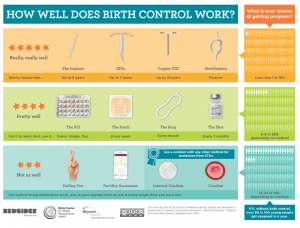A recent study published in the European Journal of Obstetrics and Gynaecology offers a detailed comparison of the efficacy of combined oral contraceptives (COCs) and the Levonorgestrel 52 mg intrauterine device (IUD). This analysis aims to provide healthcare providers and patients with a clearer understanding of the relative effectiveness of these two widely used contraceptive methods, focusing particularly on how adherence impacts efficacy.
The study highlights that, while both COCs and IUDs are effective forms of contraception, their efficacy differs significantly based on usage patterns. The pregnancy rate for women using COCs was found to be 0.0899% per 28-day cycle, whereas the pregnancy rate for women using the Levonorgestrel IUD was significantly lower at 0.0116% per cycle in the first year of use. The relative risk of pregnancy with COCs was 7.72 times higher than with the IUD during the first year, even when COCs were taken perfectly. This stark difference underscores the advantage of long-acting reversible contraception (LARC), such as the IUD, which requires minimal adherence from the user.

Image source by: UCSF, April 2019
COCs, which require daily intake at the same time each day, are prone to user error, such as missed pills, which can reduce their efficacy. In contrast, IUDs are maintenance-free, providing continuous contraception without the need for user intervention. This is particularly important for women who may struggle with daily adherence, such as those with busy schedules, younger women, or those in low-resource settings where consistent access to medication may be limited.
The study used data from two large clinical trials to calculate pregnancy rates over multiple cycles for both methods. The oral contraceptive group consisted of 3027 women aged 16-35 who used an estetrol/drospirenone 24/4 COC over 13 cycles (approximately one year). In comparison, the IUD group included 1600 women who used the Levonorgestrel 52 mg IUD for one year. While both methods were found to be safe and effective, the IUD’s lower pregnancy rate was attributed to its longer duration of action and elimination of user error.
The study also highlights the importance of considering patient adherence when recommending contraceptive methods. For women who can reliably take a pill every day, COCs remain a viable and effective option. However, for those who may struggle with daily adherence, the IUD offers a more effective alternative with a longer duration of action and minimal maintenance.
In addition to its efficacy, the Levonorgestrel IUD has other advantages, including reducing menstrual bleeding and cramping for many women, making it an attractive option for those who experience heavy periods. The study concludes that while both COCs and IUDs are highly effective forms of contraception, healthcare providers should consider the individual patient’s lifestyle and ability to adhere to daily medication when recommending a contraceptive method. For many women, the IUD may offer a more reliable and long-term solution.
Journal Article: Creinin, M. D., Brown, J. A., Rankin, H. A., Yazdani, S. (2024). Comparative efficacy of combined oral contraceptives and the levonorgestrel 52 mg IUD. European Journal of Obstetrics and Gynaecology, 300, 345-346. https://pubmed.ncbi.nlm.nih.gov/39054189/
Summary by Faith Oluwamakinde




